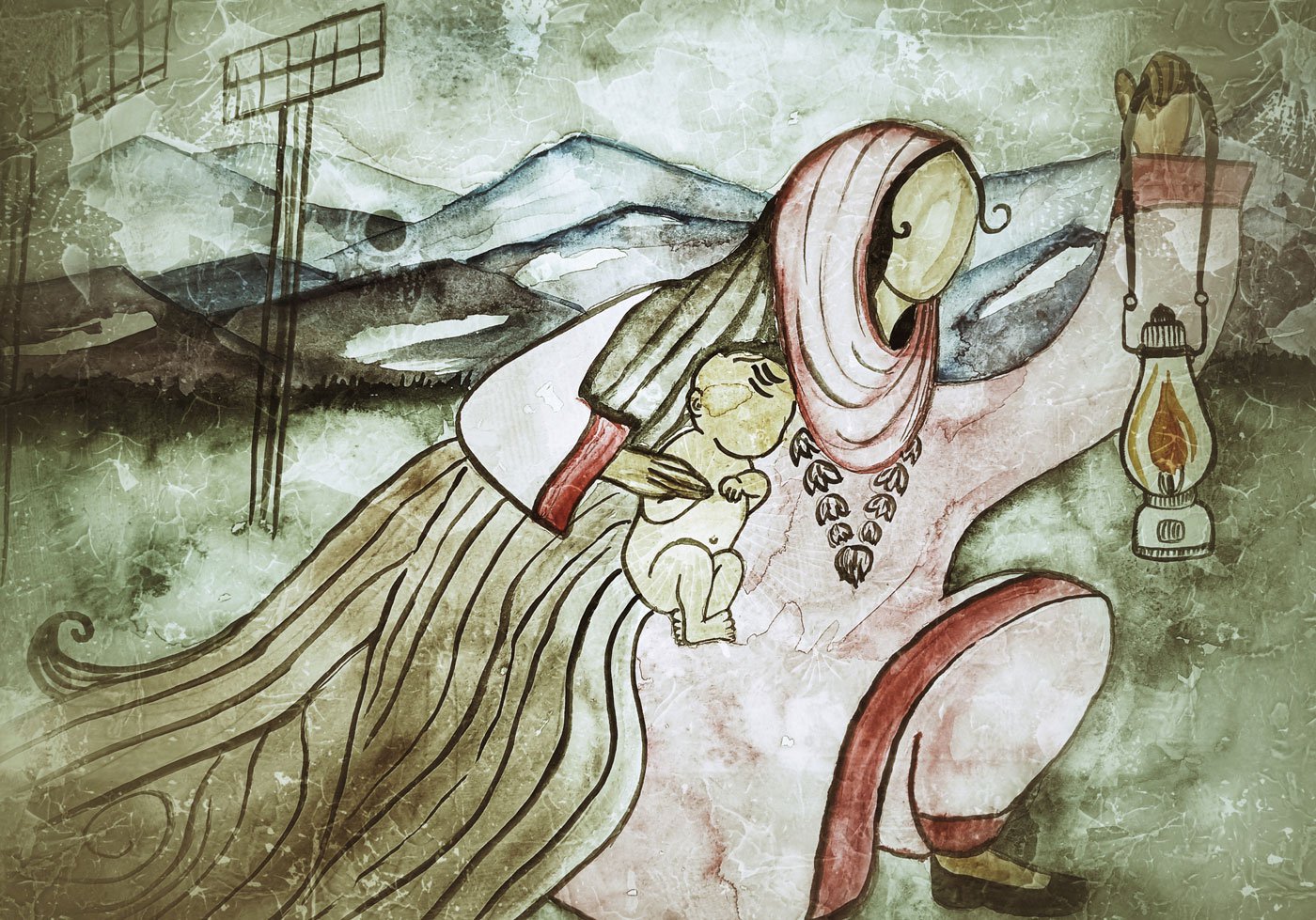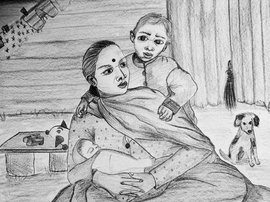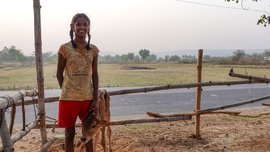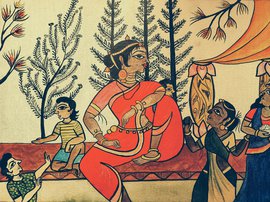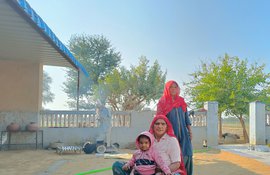“That evening when my water broke, I was in extreme pain. It had been snowing for the past three days. Whenever that happens and there’s no sunlight for days, our solar panels don’t get charged.” Shameena Begum, 22, is talking about the time of birthing her second baby in Wazirithal village of Jammu and Kashmir’s Bandipore district. A village where the sun does not shine long enough, or even regularly – where people rely on their only source of energy: solar power.
“Our house remained dark but for a kerosene lantern,” Shameena continued. “So, my neighbours came together that evening, each with her lantern. Five bright yellow flames lit up the room where my mother somehow helped me give birth to Rashida.” It was a night in April 2022.
Wazirithal is one of the most picturesque villages under Badugam gram panchayat . A 10-hour drive from Srinagar, including four and a half hours of off-roading from Razdan Pass via Gurez valley, half a dozen check-posts, and a final 10-minute walk, is what it takes to reach Shameena’s home. That is the only way.
The houses of 24 families in this village in Gurez valley, just a few miles away from the Line of Control, are made from deodar wood and coated with mud from the inside for thermal insulation. Old yak horns, sometimes original, sometimes a wooden replica painted green, adorn the main doors of the houses here. The windows, almost all of them, open to the sights on the other side of the border.
Shameena is seated on a pile of wood outside her house with two of her children – two-year-old Farhaz and four-month-old Rashida (names changed) – soaking in the last rays of the evening sun. “My mother tells new mothers like me to sit in the sun, mornings and evenings, with our newborns every day,” she says. It is still August. The snow has not yet colonised the valley. But there are still cloudy days, occasional rains, and days without the sun, without electricity.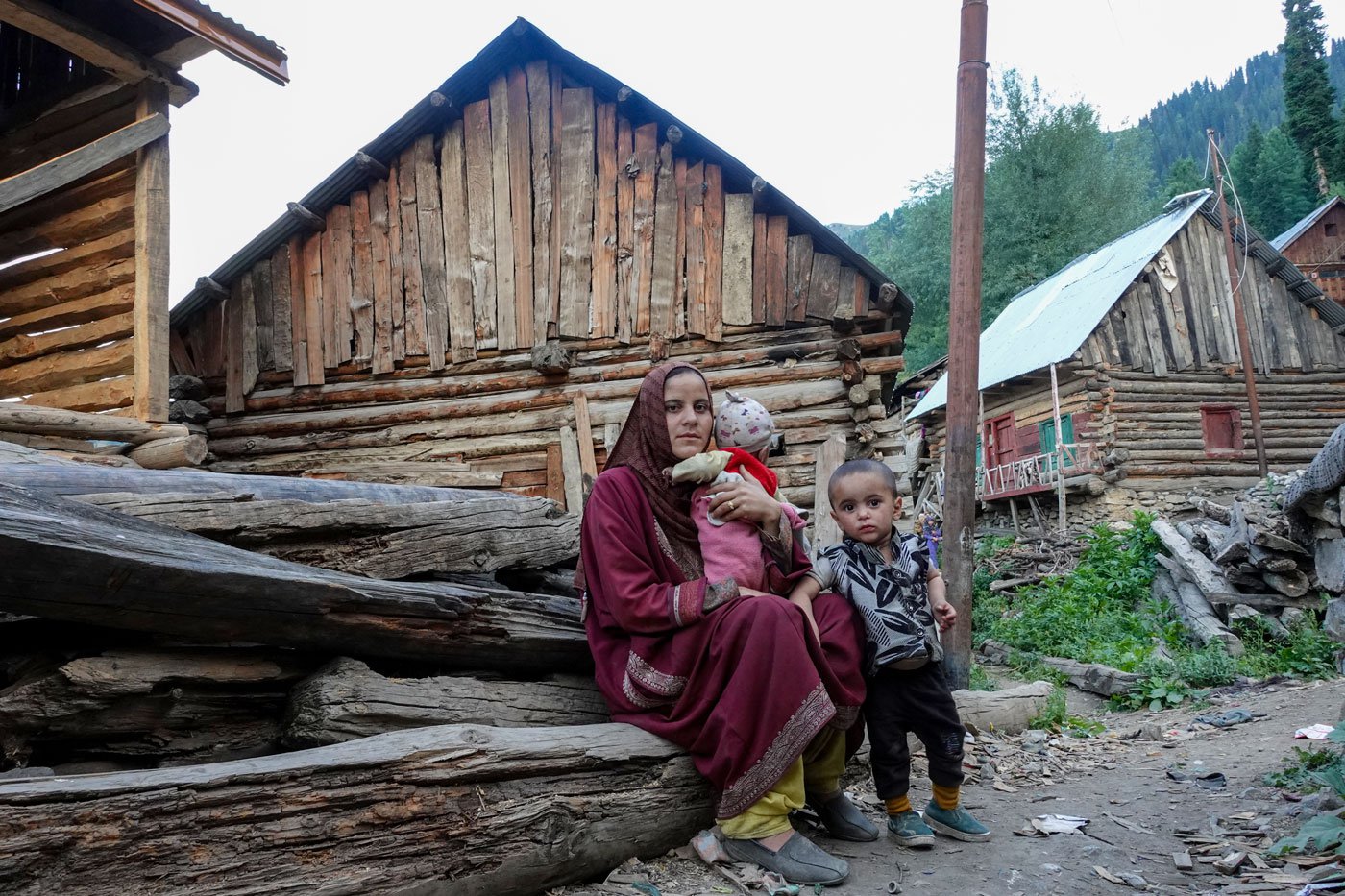
Shameena with her two children outside her house. Every single day without sunlight is scary because that means a night without solar-run lights. And nights like that remind her of the one when her second baby was born, says Shameena
“We got solar panels through the block office just two years ago, in 2020. Till then, we only had battery-operated lights and lanterns. But these [solar panels] still don’t solve our problems,” says 29-year-old Mohammad Amin, a Wazirithal resident.
“Other villages of Badugam block get electricity for seven hours through generators, and here we have a 12 Volt battery that’s powered by solar panels. It helps us run two light bulbs and charge a couple of phones in every house for a maximum of two days. Which means, if it rains or snows for more than two consecutive days, there is no sunlight – and so no [electric] light for us,” Amin adds.
Snowfall during the six-month-long winter here is severe, and forces families to migrate between October and April to the districts of either Ganderbal, 123 kilometres away, and Srinagar, about 108 kilometres away. Shameena’s neighbour Afreen Begum puts it vividly for me: “We start to leave the village by mid or end October. It becomes tough to survive here November onwards. The place you are standing at remains covered by snow till here,” she says, pointing towards my head.
This means, journeying every six months to a new place to settle away from home, and a return home after winter. Some have their relatives there [Ganderbal or Srinagar] while others rent a place for six months,” says Shameena, donning a maroon pheran , the long woollen dress that helps Kashmiris keep warm. “Nothing remains visible here except 10 feet of snow. We barely move out of the village unless it’s that time of the year.”
Shameena’s 25-year-old husband, Gulam Musa Khan, is a daily wage labourer. He is often without work in the winters. “When we are here in Wazirithal, he works near Badugam and sometimes in Bandipora town. He mostly works in road construction projects, but sometimes he also finds work at construction sites. He makes around 500 rupees per day when he gets work. But five or six days a month on an average, he has to sit at home due to rains,” says Shameena. Depending on the work, Gulam Musa earns about Rs. 10,000 in a month, she says.
“But when we move to Ganderbal, he drives an autorickshaw. He takes it on rent and plies it in Srinagar, where the winter attracts tourists from all over. That also gets him more or less the same amount [Rs. 10,000 a month], but we are not able to save anything there," she adds. Transport facilities in Ganderbal are better than those in Wazirithal.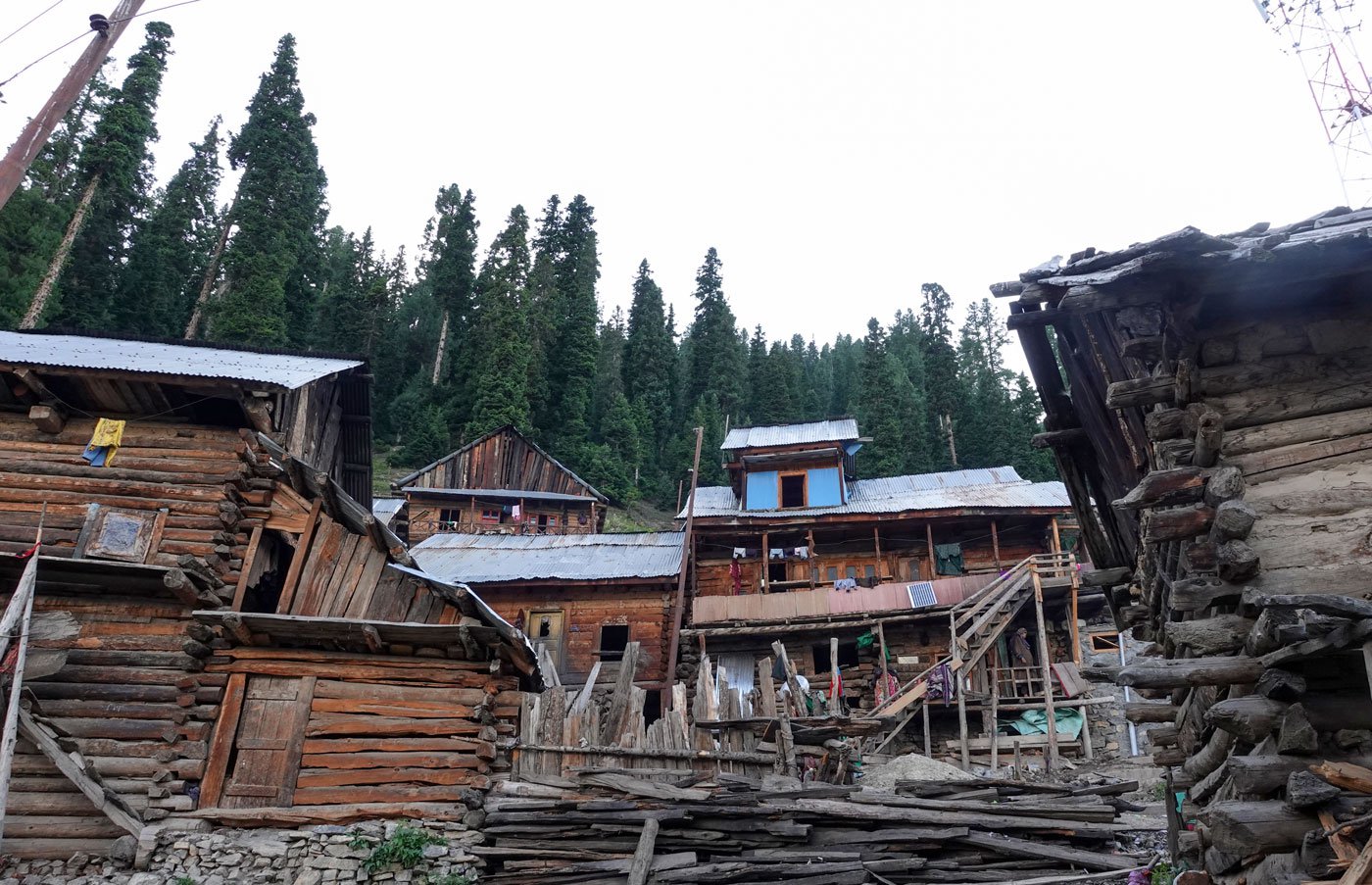
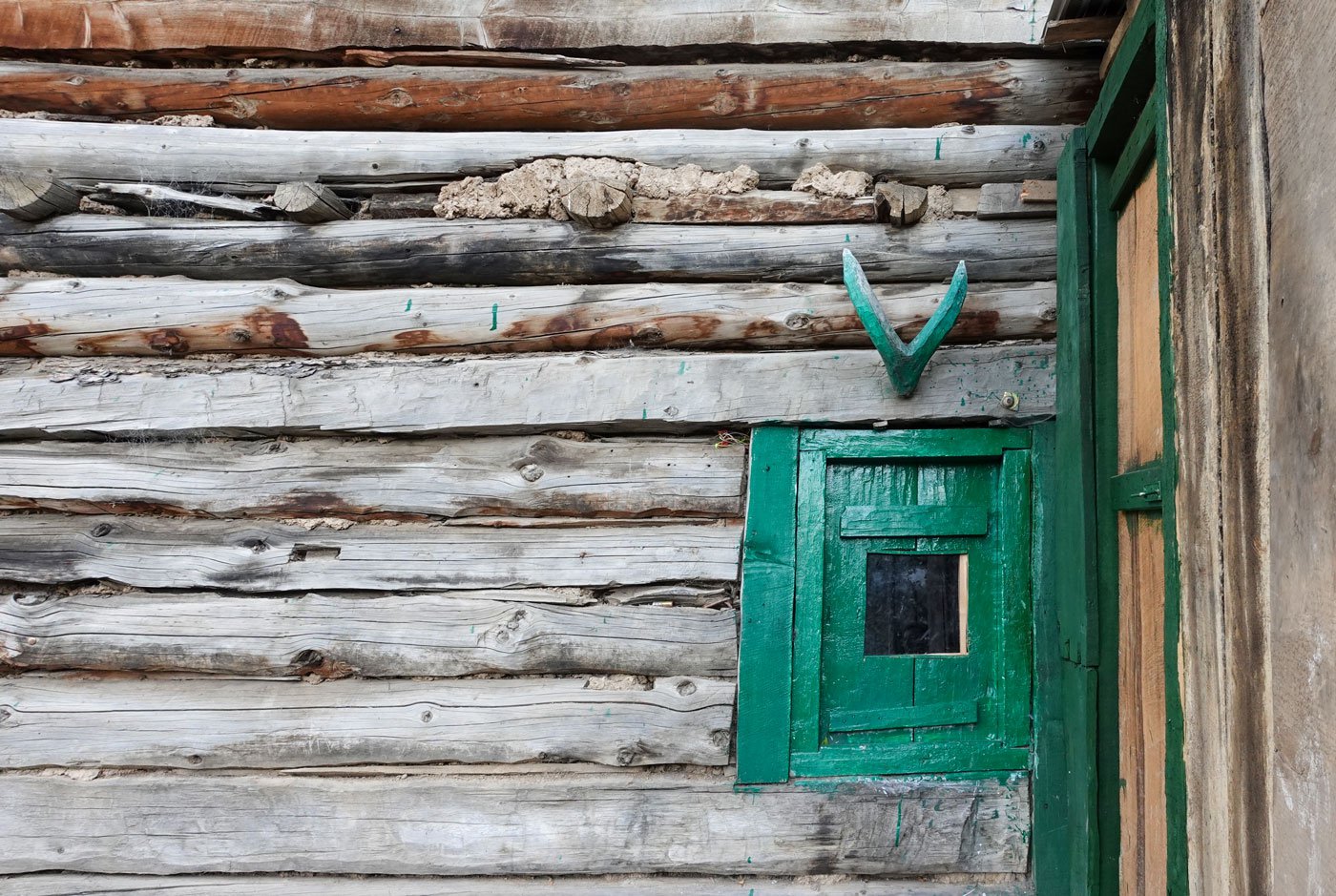
Left: Houses in the village made of deodar wood. Right: Yak horns decorate the main entrance of houses in Wazirithal, like this one outside Amin’s house
“Our children want to stay there [in Ganderbal] only,” Shameena says, “They get to eat different kinds of food. Electricity is also not an issue. But we have to pay rent there. During the months that we live here [Wazirithal], we keep saving.” The money they spend on groceries in Ganderbal adds to their expenses. In Wazirithal, Shameena can at least maintain a kitchen garden that takes care of vegetables for the family. And the house they live in is their own. The one they rent in Ganderbal costs them anywhere between Rs. 3,000 and 3,500 a month.
“Definitely the houses there are not as big as what we have here, but the hospitals are good and the roads are even better. Everything is available there but at a price. At the end of the day, that's not our home," Shameena tells PARI. It was because of the expenses that the family was forced to travel back to Wazirithal during the last trimester of Shameena’s first pregnancy, in the middle of the nationwide lockdown.
“I was seven months pregnant with Farhaz when the lockdown was announced in March 2020; he is a pandemic product,” Shameena smiles. “In the second week of April, we hired a vehicle and came home since it was becoming difficult to survive in Ganderbal without any income, and having to spend on food and rent,” she recalls.
“There were no tourists. My husband was unable to earn anything. We had to take a couple of loans from relatives to meet the costs of my medicines and groceries. We have paid back them back, though. Our landlord had his own vehicle, and seeing my condition he let us use it for 1,000 rupees plus fuel charges. That is how we were able to return home.”
But back in Wazirithal, the problem has been not just intermittent power supply but also roads in and around the village, and the lack of health care facilities. There is a primary health centre (PHC) about five kilometres from Wazirithal but it is ill-equipped to handle even normal deliveries due to unfilled vacancies of medical staff.
“The Badugam PHC has just one nurse. Where do they do deliveries?” asks Raja Begum, 54, an anganwadi worker from Wazirithal. “Whether it’s an emergency, an abortion, or a miscarriage, they all have to go straight to Gurez. And if there is an operation involved, they must go to Lal Ded Hospital in Srinagar. That is about 125 kilometres away from Gurez and may take nine hours to reach in difficult weather,” she adds.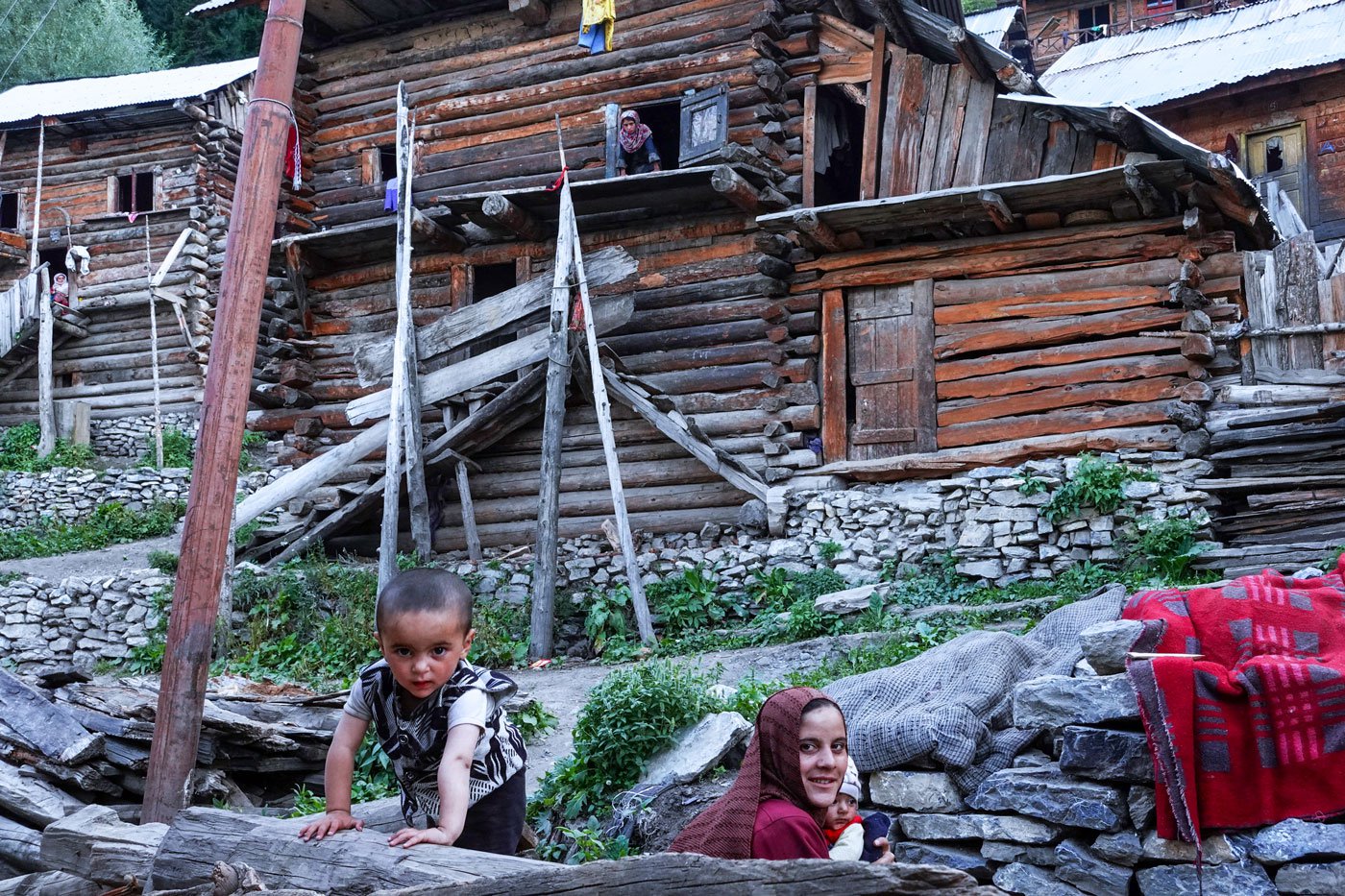
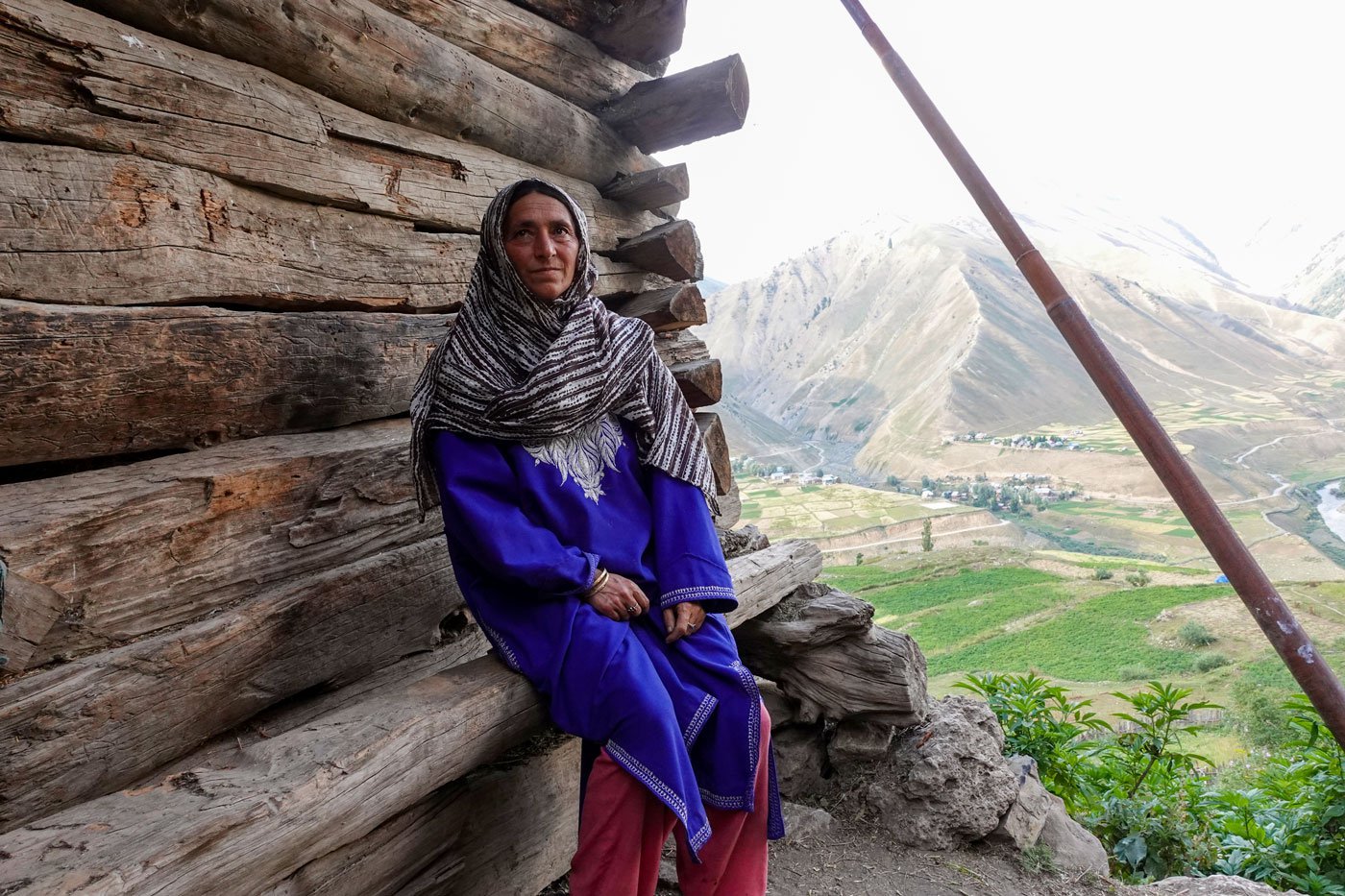
Left: Shameena soaking in the mild morning sun with her two children. Right: Raja Begum, the anganwadi worker, holds the information about every woman in the village
The roads up to the Gurez CHC are bad, says Shameena. “Going to and returning from the hospital there takes two hours each way,” says Shameena as she describes her experience during the pregnancy in 2020. “And then the way I was treated at the hospital [CHC]! It was a safai karmi who helped me give birth to the baby. Not even once did a doctor come to check on me, during or after the delivery.”
Both PHC and CHC in Gurez have long been plagued by a serious shortage of medical officers and specialists including physicians, gynaecologists and paediatricians. This has been much discussed in the state media. Raja Begum says that the PHC only provides first aid and X-ray facilities. For anything beyond that, the patient is referred to the CHC in Gurez, 32 kilometres away.
But the state of Gurez’s CHC is dismal. The block medical officer’s report (circulated on social media in September 2022) states that the posts of 11 medical officers, 3 dental surgeons, 3 specialists including a physician, a paediatrician and a obstetrician-gynaecologist in the block are vacant. This contradicts a Niti Ayog health index report that speaks of an improvement in filling up vacant positions.
Afreen, 48, who lives just 5-6 houses away from Shameena’s, home has a story of her own. “When I had to go to the CHC in Gurez for childbirth in May 2016, my husband carried me to our transportation on his back. I was obviously facing the opposite direction. There was no other way for me to reach the point 300 metres away where the hired Sumo was waiting,” she says, speaking in Kashmiri interspersed with Hindi. “That was five years ago, but the situation is still the same. Now our midwife is also getting older and is ill at times.”
The midwife Afreen is referring to is Shameena’s mother. “After my first delivery I had decided that in future I would give birth at home only,” Shameena pitches in, “and if it weren’t for my mother, I might not have survived after my water broke during my second pregnancy. She is a midwife and has helped many women in the village.” Shameena points towards an old lady singing songs to a toddler in her lap barely 100 metres away from where we are.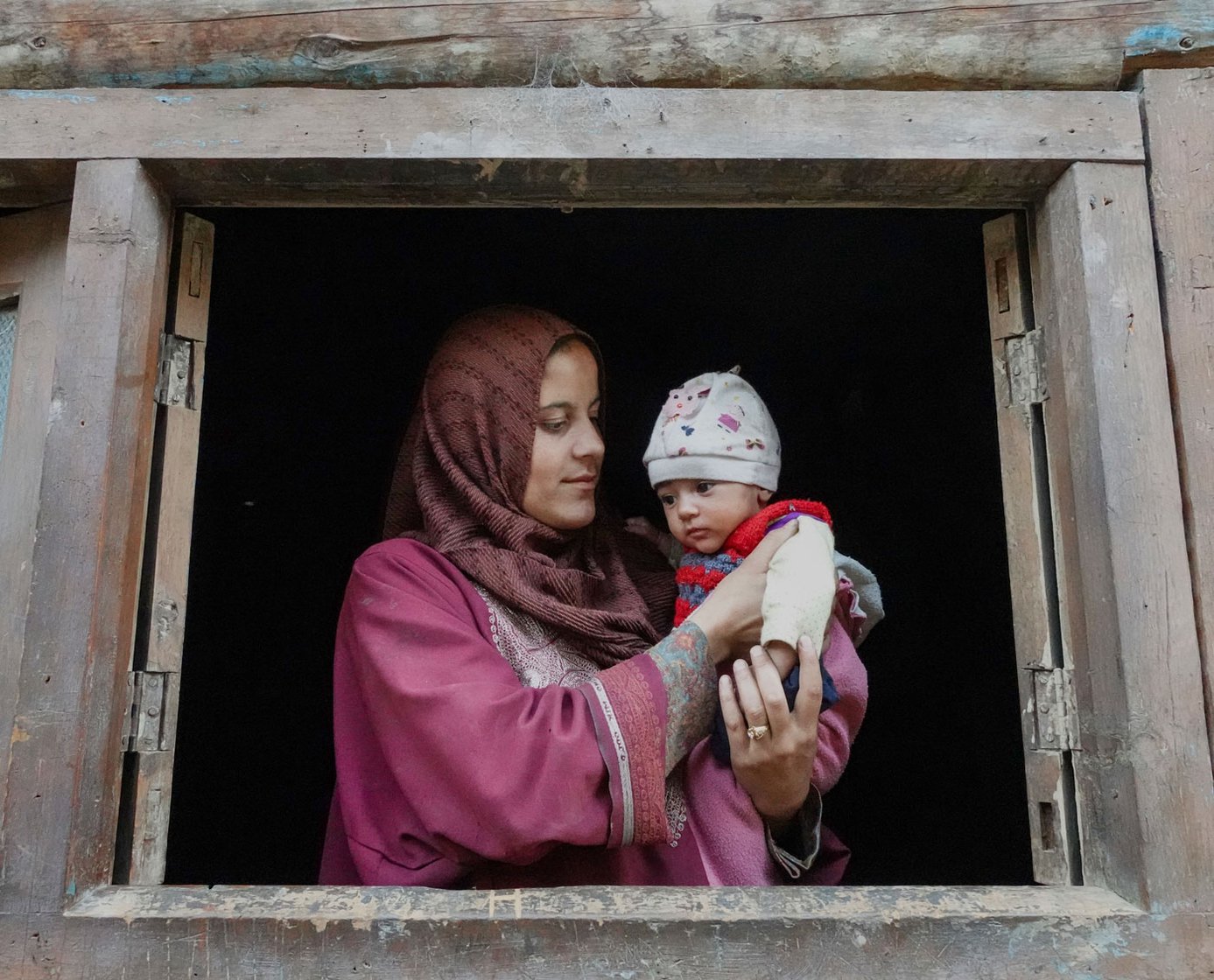
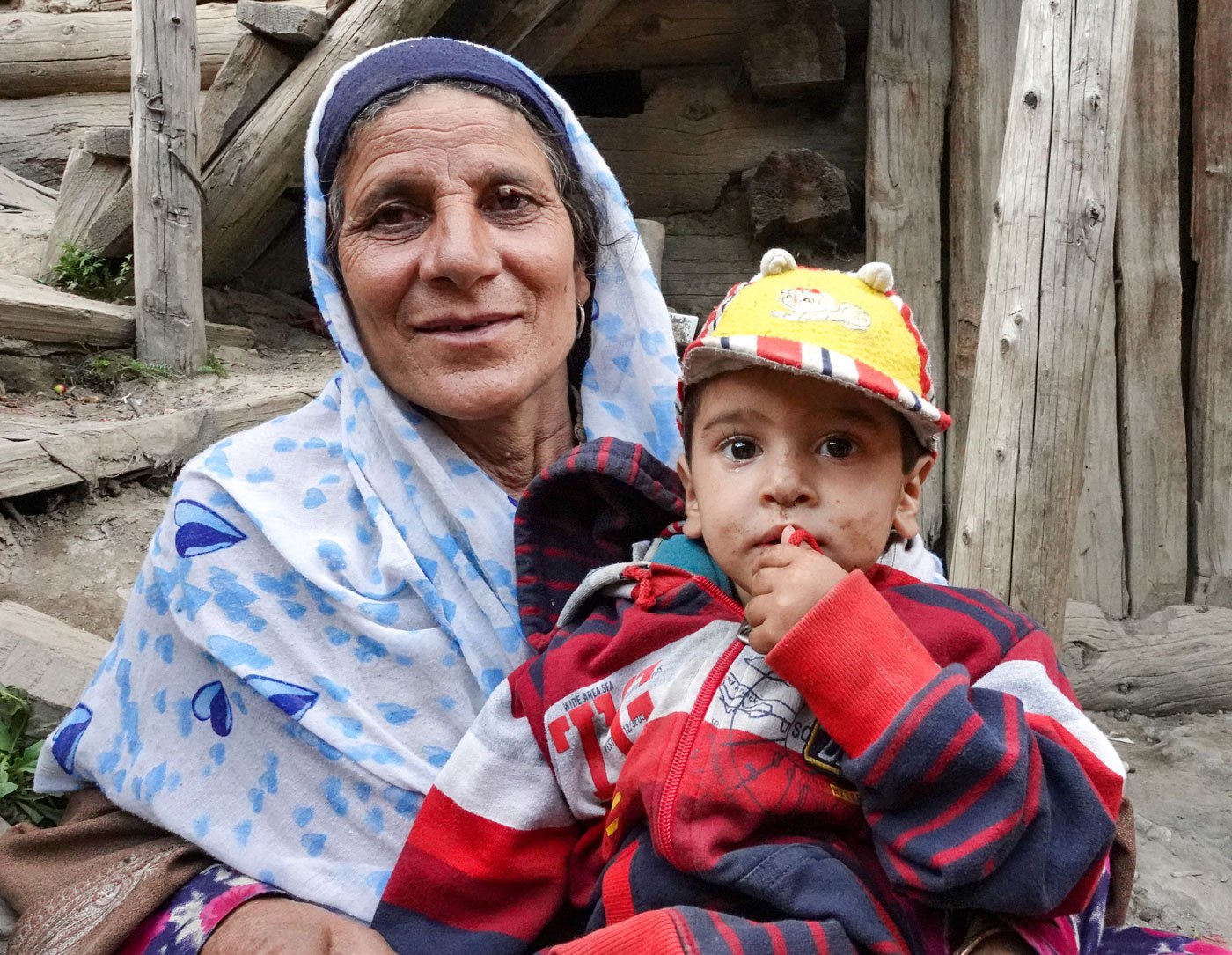
Left: Shameena with her four-month-old daughter Rashida that her mother, Jani Begum, helped in birthing. Right: Jani Begum, the only midwife in the village, has delivered most of her grand-children. She sits in the sun with her grandchild Farhaz
Shameena’s mother, Jani Begum, 71, dressed in a brown pheran , is sitting outside her house, Like every other woman in the village, her head is also covered by a scarf. The wrinkles on her face speak of her long experience. "I have been doing this for the past 35 years. Years ago, my mother would allow me to help her when she went for deliveries. So, I observed, practised and learnt. It's a blessing to be able to help,” she says.
Jani has noticed a slow change in her lifetime here, but not substantial enough. “There are fewer risks in deliveries these days because women now get iron tablets and all other useful supplements, which wasn't the case back then,” she says. “Yes, there has been a change but it's still not like the other villages. Our girls are now studying but even today have limited access when it comes to good health care facilities. We have the hospitals but no road to reach there quickly in an emergency.”
The Gurez CHC is far off and getting there means a minimum of 5 kilometres of walking, Jani says. After 5 km, one has a chance of getting public transport to reach there. You can find a private vehicle by walking just half a kilometre, but that would be far more expensive.
“During her second pregnancy, Shameena became very weak in the third trimester,” Jani says. “We considered going to the hospital on the suggestion of our anganwadi worker, but my son-in-law was out of town, seeking work. It is not easy to get a vehicle here. Even if we get one, people must carry the pregnant woman to the vehicle,” she adds.
“What would happen to the women of our village after she is gone? Whom would we rely on?” Afreen speaks aloud, referring to Jani. It is evening. Shameena is looking for eggs in the bushes outside her house to plan a dinner. “The hens hide their eggs. I have to find them to make an egg curry, or else it’s rajma and rice again tonight. Nothing comes easy here. This village looks picturesque with houses in the middle of the woods from far away. but only when you come closer, you will get to know what our lives are really like,” she says.
PARI and CounterMedia Trust's nationwide reporting project on adolescent girls and young women in rural India is part of a Population Foundation of India-supported initiative to explore the situation of these vital yet marginalised groups, through the voices and lived experience of ordinary people.
Want to republish this article? Please write to [email protected] with a cc to [email protected]
